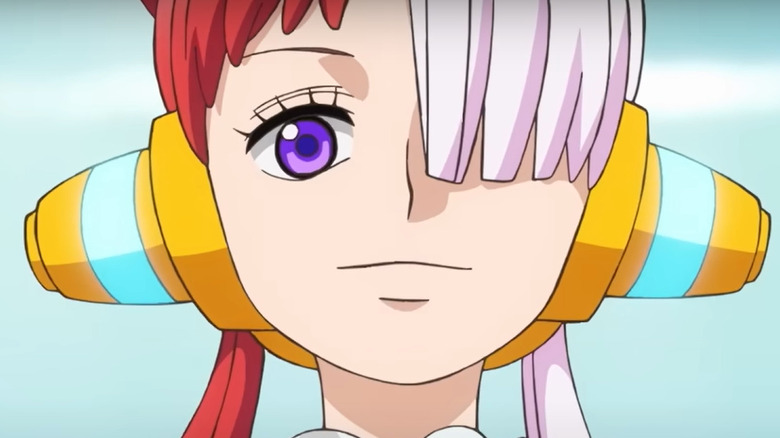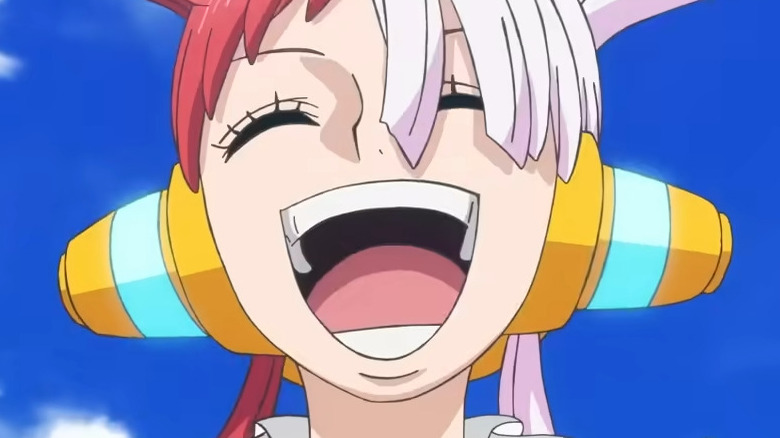The Major Reason One Piece Film: Red's Uta Is Played By Two Actors
"One Piece Film: Red" is an upcoming animated film from Toei Company. It exists in the "One Piece" canon that sees Monkey D. Luffy, the young captain of a gang of magical anime pirates called the Straw Hats, reunite with a childhood friend who became a global singing sensation while hiding her true identity as the daughter of the infamous pirate, Red Haired Shanks. As of this writing, "One Piece Film: Red" has already been released in Japan and is set to release in the United States in just a few short weeks.
While there's no confirmed English voice cast, there is a complete Japanese voice cast (via IMDb). If you look at the cast list for the project, you would discover that Luffy's childhood friend, Princess Uta, has two separate performers in the role. The logical question, then, is why did Toei Company cast two voices for Princess Uta? The answer is pretty straightforward, and fortunately for us, it has already been addressed by the creative team.
Uta has two voice actors with two different skillsets
In an interview with Anime News Network, producer Shinji Shimizu spoke about many things regarding "One Piece Film: Red," including why two different voice talents — Kaori Nazuka and Ado — voiced the character of Princess Uta. Shimizu said, "In terms of Nazuka, she had auditioned out of many voice actresses, and as far as Ado, she was imagined for the role from the beginning ... Nazuka is doing all the speaking and the acting and performing, and Ado is doing the musical performances, so their voice — tonally, texturally — is slightly different." He continued, "Nazuka was very aware of what Ado was performing. She would listen to Ado's singing performances over and over to try and make sure her acting matched whatever Ado was singing, so that's how they were able to get one character with two actors."
In short, the notably musical Uta was molded into being with Ado (the singer's pseudonym, like Ke$ha) in mind for the vocals. Then the studio held auditions for the character's speaking voice, ultimately going with Nazuka. This isn't a new approach. Not to date ourselves, but there was a time when animated projects featured two actors per role because they wanted solid vocals for the musical numbers and then an actual voice actor for the rest of the work. As noted by Geeks, Disney used to be the champion of this formula back in the 1990s. Nowadays, as evidenced by productions like "Sing," casting skews towards singular talents that are musicians first and foremost. By harkening back to the trend, "One Piece Film: Red" looks to guarantee quality.

